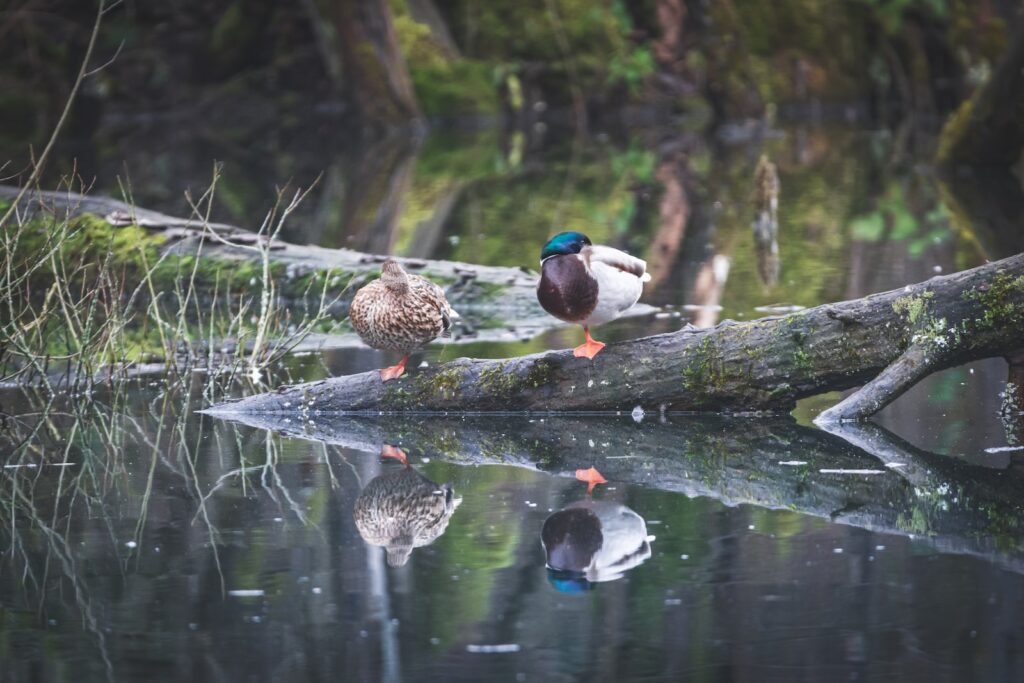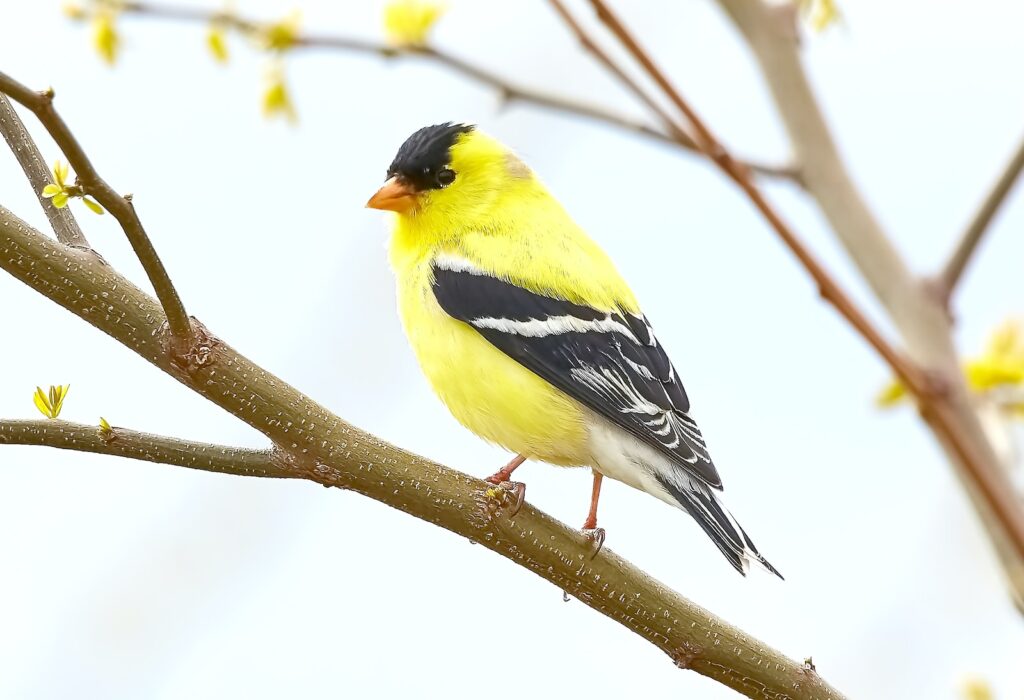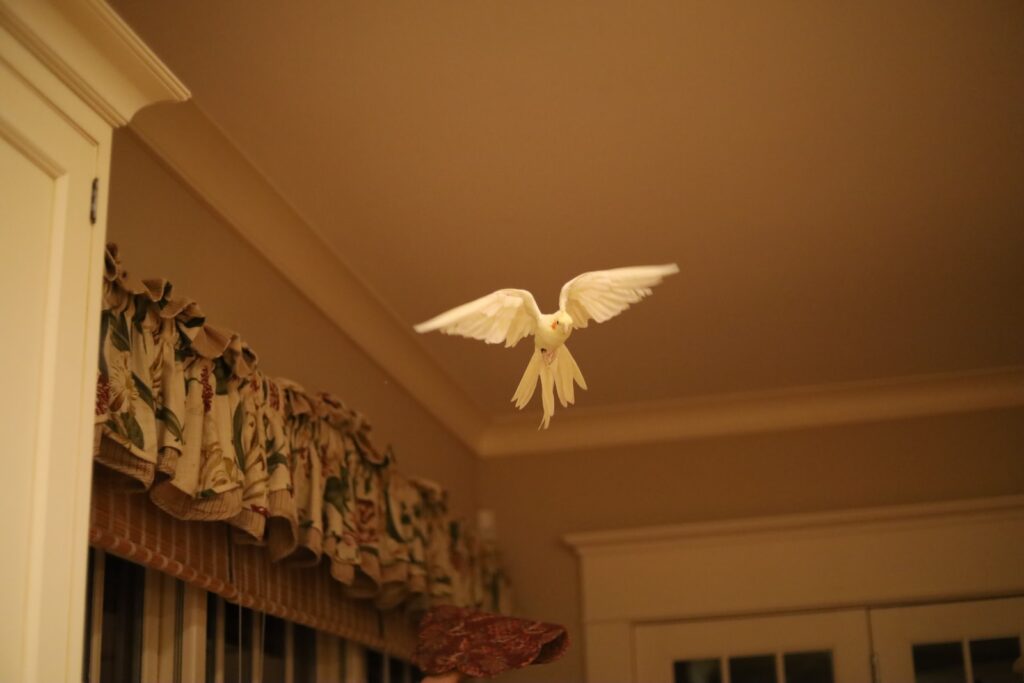Understanding What Birds Desire
As a seasoned observer of avian wonders, I can’t emphasize enough the delight of having songbirds frequent your space. Setting up a bird-friendly yard is akin to laying out a welcome mat for nature’s minstrels. Let’s break down what these fine-feathered friends truly long for.
The Right Food
Feeding birds isn’t just about tossing out some generic seed mix. To truly cater to our feathered guests, understanding their individual preferences is crucial. For instance:
- Finches, with their petite beaks, are particularly fond of the tiny Nyjer seeds. This high-energy food is their absolute favorite.
- Black sunflower seeds are the universal crowd-pleaser. Rich in oil, they’re not only nutritious but also beloved by a vast array of birds.
- Ever observed robins’ penchant for wriggling things? They can’t resist mealworms! Though it might make us cringe, these worms are a protein-packed delicacy for them.
- Winters can be harsh, and birds need extra calories to keep warm. Suet cakes, laden with fat, offer the sustenance they require during cold months.
Water Sources
Providing clean, fresh water is non-negotiable. A shallow birdbath is often the simplest choice. Birds don’t just drink water; they love to splash around, cleanse their feathers, and indulge in some spa time. A bath with a gentle flow or a fountain feature is even better. The sound of trickling water acts as an irresistible beacon for many bird species.
Nesting Opportunities
While feeding draws birds in, offering nesting sites encourages them to stay. Consider installing birdhouses tailored to different species. However, sometimes nature does it best. If it’s safe, leaving a dead tree (or snag) can provide essential nooks and crannies for nesting and shelter. Each species has its housing requirements, so a little homework can go a long way.
Protection from Predators
A feeder’s location can be the thin line between life and death for birds. Placing it in an open space gives birds a clear vantage point to spot approaching predators. But, ensure they have quick access to shrubs or thickets, offering an emergency escape route. And about the age-old rivalry between birds and cats? Keeping our feline friends indoors during prime bird-feeding times can ensure peace reigns.
Creating The Perfect Bird Habitat
Native Plants are Gold
Native plants aren’t just a boon for gardeners. For birds, they offer a smorgasbord of benefits. From shelter to food sources like seeds, berries, and insects, these plants are integral to a bird’s life cycle. Bonus: they’re adapted to local soil and climate conditions, translating to lower maintenance for you.
The Importance of Diversity
A single type of plant or tree won’t cut it. Birds are diverse, and their needs are too. A multilayered habitat with ground cover, shrubs, and canopy trees will attract various species. Think of your yard as a bird metropolis, with each plant species acting as a different neighborhood.
Maintaining a Clean Environment
While we relish the sight of birds flocking to feeders and baths, we must ensure these spaces remain hygienic. Regularly cleaning feeders and water sources reduces the risk of disease transmission, ensuring our avian buddies remain hale and hearty.
Be Patient
Good things come to those who wait. Birds are naturally cautious, and it might be a while before they trust your yard as a safe haven. But, once they realize the goldmine of resources you’ve provided, they’ll be back in droves, making the wait worthwhile.
Mistakes To Avoid
Using Harmful Pesticides
While aiming for a pristine garden, many tend to rely on pesticides. However, these chemicals pose a silent threat to our feathered friends. Birds often feed on insects. When these insects are laden with pesticides, the toxins move up the food chain. Instead of chemical warfare, consider organic alternatives. They’re kinder to the environment and won’t turn your garden into a danger zone for birds.
Positioning Feeders Poorly
It’s heartbreaking to see a bird collide with a window, often with fatal consequences. The reflection on the glass can be misleading for them. To prevent such mishaps, place feeders at a safe distance from windows. If near a window is the only viable spot, make the glass visible to birds by using decals or shades.
Forgetting Seasonal Needs
Birds, like us, have changing needs according to the seasons. In winters, when ponds and streams freeze over, an unfrozen water source can be life-saving. Also, providing high-fat foods during cold months can be the extra boost they need to combat the chill. Always be attuned to these shifts and adjust your offerings accordingly.
Being Overzealous
It’s thrilling to have birds take up residence in a provided birdhouse. But curb that enthusiasm! Frequently peeking into their homes can distress them. It’s best to observe from a distance and let them be. Give them the privacy they deserve and need.
The Rewards of Your Hard Work
A Natural Alarm Clock
Trade the jarring sound of an alarm clock for the melodious tunes of birds. It’s a gentle, yet joyful way to start the day, aligning you with nature’s rhythm.
Reduced Pest Issues
Before reaching for that insect spray, consider this: birds are natural pest controllers. From beetles to mosquitoes, they keep many pesky bugs in check. By attracting birds, you’re essentially hiring a team of efficient (and adorable) exterminators.
Nature’s Therapy
In the hustle and bustle of modern life, moments of tranquility are rare. Watching birds go about their daily routines—feeding, preening, chirping—offers a slice of serenity. It’s a mindful exercise that calms the mind and soothes the soul.
An Educative Experience for Kids
Forget TV; real-life nature documentaries are unfolding right in your backyard! It’s an unparalleled educational experience for children. They learn about different bird species, their habits, and the wonders of the ecosystem. Who knows, you might be nurturing the next generation of ornithologists!
Prompt 1 – Act like a 20+ years SEO expert content writer. I will give you an outline. I want you to expand the given content in depth to make an 1800-2000 word article. Write in fluent English based with high degree of complexity, variations, perplexity, and burstiness as if it were written by a human. Make it human-like. Remember to write short sentences and use less difficult words (common English words) to improve readability and aim for a high Flesch reading ease score,
Prompt 2- Expand the content within proper HTML markup such as main headings inside h2 tags and subheadings in h3 tags text in p tags and list in ul li and so on.
Prompt 3 – As I am asking for a very long text output (1800 – 2000 words) you may not able to respond it all in once. I have marked parts as -PART {Number}- and you can send me all separately each response should have one single part . for example you can write and send the part 1 and finish it and i will reply with next then you will send next part and so on.
Prompt – 4 – do not write -PART {Number}- , any other informational, instructional and/or unrelated message in your response.
Here is the outline:
-PART 1-
Introduction: A Tiny, Furry Conundrum
Have you ever stood, bag of food in hand, wondering what’s truly best for your guinea pig or hamster? Yup, us too. But fear not, for today we’re delving deep into the nutritious world of feeding our small, furry friends!
Understanding Their Nutritional Needs
The Herbivorous Guinea Pig
Guinea pigs are, by nature, herbivores. They have a simple stomach, but their dietary needs can be complex. A mix of hay, fresh vegetables, and a sprinkle of humor is what keeps them going. And by humor, we mean the way they look at you when they want treats. Priceless!
The Omnivorous Hamster
Hamsters, unlike their cavy counterparts, are omnivores. This means they thrive on a diet of both plant and animal-based foods. Ever seen a hamster munch on a tiny piece of chicken? It’s both cute and scientifically accurate!
Importance of Fiber
Both guinea pigs and hamsters require a good dose of fiber, especially from hay. It aids digestion and ensures their little teeth stay in check.
Watch the Sugar!
Too many fruits can lead to obesity and diabetes, especially in hamsters. So, moderation is key, just like when you’re eyeing that second piece of cake.
Choosing the Right Feed
Commercially Available Diets
There are numerous commercial feeds tailored to the specific needs of these animals. They are convenient and often fortified with essential vitamins and minerals.
Fresh Foods and Their Benefits
Both guinea pigs and hamsters love fresh foods! Veggies like bell peppers, cucumbers, and broccoli are some favorites. Remember, variety is the spice of life!
Treats and What to Avoid
While treats are, well, a treat, they should be given sparingly. Avoid anything high in fat, sugar, or artificial additives.
DIY or Homemade Mixes
If you’re feeling adventurous, you can make your own mixes at home. But be sure to research and balance out the nutrients properly.
-PART 2-
The Water Factor
Importance of Fresh Water
Water is as crucial to these furballs as it is to us. Fresh, clean water should always be available.
Water Bottles vs. Bowls
Bottles are generally more sanitary than bowls. Plus, watching a hamster operate a water bottle is endlessly amusing!
Changing and Cleaning
Change water daily and clean the container or bottle regularly to keep bacteria at bay.
Hydration Indicators
Curious if they’re drinking enough? Check if their urine is clear and they’re active. If not, consult a vet.
Feeding Frequency and Portions
Regular Schedules
Just like humans, these little ones thrive on routine. Feed them at the same times every day.
Portion Control
Too much of a good thing can be harmful. Ensure you’re not overfeeding them to avoid obesity.
Observing Their Eating Habits
Keep an eye on what they eat and how much. It’s a good indicator of their overall health.
Adjustments for Age and Health
Young, pregnant, or sick animals might have different dietary needs. Adjust accordingly and consult a vet when in doubt.
-PART 3-
Supplements and Vitamins
Vitamin C for Guinea Pigs
Unlike us, guinea pigs can’t produce Vitamin C. They need a daily dose from their diet or supplements.
Calcium Considerations
While calcium is essential, especially for growing animals, too much can lead to bladder stones. Balance is the mantra here.
Other Essential Supplements
Depending on their diet, they might need additional vitamins or minerals. Keep an eye on their health and adjust as needed.
When to Supplement
If they’re on a well-balanced diet, they might not need extra supplements. But if you notice any health issues, it’s best to get professional advice.
The Forbidden Foods
Toxic Veggies and Fruits
Not all greens are good. Foods like onions and raw beans are a no-go. Always research before introducing a new food.
Unsuitable Treats
Chocolates, candies, or anything loaded with sugar and artificial additives should be avoided. Remember, natural is best!
High-Fat Foods
They might love a piece of cheese, but it’s not the healthiest choice for them. Opt for leaner treats.
Exotic Foods
Stick to what’s tried and tested. Exotic foods might be intriguing, but they’re also unknown territories.
-PART 4-
Conclusion
So there you have it, the A to Z of feeding your guinea pigs and hamsters. A balanced diet, fresh water, and a sprinkle of love are all they need. And maybe a treat or two, just don’t tell them we said that!
FAQs
1. Can guinea pigs and hamsters share food?
While they have some overlapping dietary needs, it’s best to get species-specific food for each.
2. How often should I feed my pets?
Twice a day, morning and evening, works for most. But always have hay available for them to munch on.
3. My pet is gaining weight, what do I do?
Reevaluate their diet, reduce treats, and ensure they get enough exercise.
4. Is it okay to give them food scraps from our meals?
It depends on the scrap. Veggies? Maybe. Pizza? A big no-no.
Joining Bird-Watching Communities
Local Clubs
Local bird-watching clubs are the gateway to a passionate community that shares a love for our avian counterparts. By joining these clubs, you open doors to group outings, where you can trek through nature, spotting and identifying various species. These gatherings often host seasoned birders who generously share their wealth of knowledge, making the experience enriching for both beginners and veterans. Additionally, attending lectures and events organized by the club keeps you updated with the latest in the world of ornithology.
Online Groups
In today’s digital age, geography is no barrier to passion. Numerous online platforms cater to bird enthusiasts. Whether it’s dedicated forums or popular social media sites like Facebook, there’s a space for every birder. These online hubs allow members to share photographs, discuss species, and even help in identifying rare sightings. Being part of such groups means you’re never alone in your bird-watching adventures, even if you’re just sitting at your computer!
Apps and Websites
Technological advancements have made bird-watching a more interactive and informed hobby. Platforms like eBird not only let you record and track your sightings but also allow you to share these experiences with a global community. Such apps often come with maps, helping you locate bird hotspots and migration paths. Additionally, real-time data from other birders can alert you to unique sightings in your vicinity. It’s a blend of traditional bird-watching with a touch of tech!
Books and Guides
While the digital domain offers a plethora of information, traditional books and guides hold their ground as invaluable resources. These written compendiums provide detailed illustrations, habits, calls, and much more about various species. For many, the tactile experience of flipping through pages, making notes, and referencing illustrations adds an unmatched charm to the bird-watching experience. It’s always a good idea to have a trusted field guide in your birding kit.
Conclusion
Transforming your space into a bird sanctuary is more than just a hobby; it’s a commitment to nature and its wonders. It offers joy, peace, and insights into the world of birds, right in your backyard or balcony. With every seed you offer, every bath you fill, and every birdhouse you hang, you’re building bridges with the avian world. And as the melodies of gratitude fill your mornings and the colors dazzle your eyes, you realize that this bond is indeed special. So, spread those metaphorical wings, let your passion soar, and make your space the talk of the bird town!
FAQs
1. What’s the best time of year to set up a bird-friendly space?
Though spring is the prime season when birds scout for nesting sites, making it an ideal time, any season has its charm. The key is to cater to their changing needs throughout the year.
2. How do I know what birds are in my area?
Tapping into local bird-watching clubs or using digital platforms like eBird can provide insights into the avian residents of your region. Observing and noting is also a practical and delightful way to learn.
3. Do I need a big yard for this?
Size isn’t a constraint when it comes to attracting birds. Whether it’s an expansive yard or a cozy balcony, with the right elements, any space can be made bird-friendly.
4. Are bird feeders necessary?
Bird feeders, while not essential, act as a magnet for birds. They provide a reliable food source, especially during harsh conditions, drawing in various species.
5. How do I handle unwanted guests like squirrels?
Squirrels, though cute, can be a tad greedy. Squirrel-proof bird feeders can help. If you’re feeling generous, setting up a separate feeding station for these furry friends ensures everyone gets a bite!



